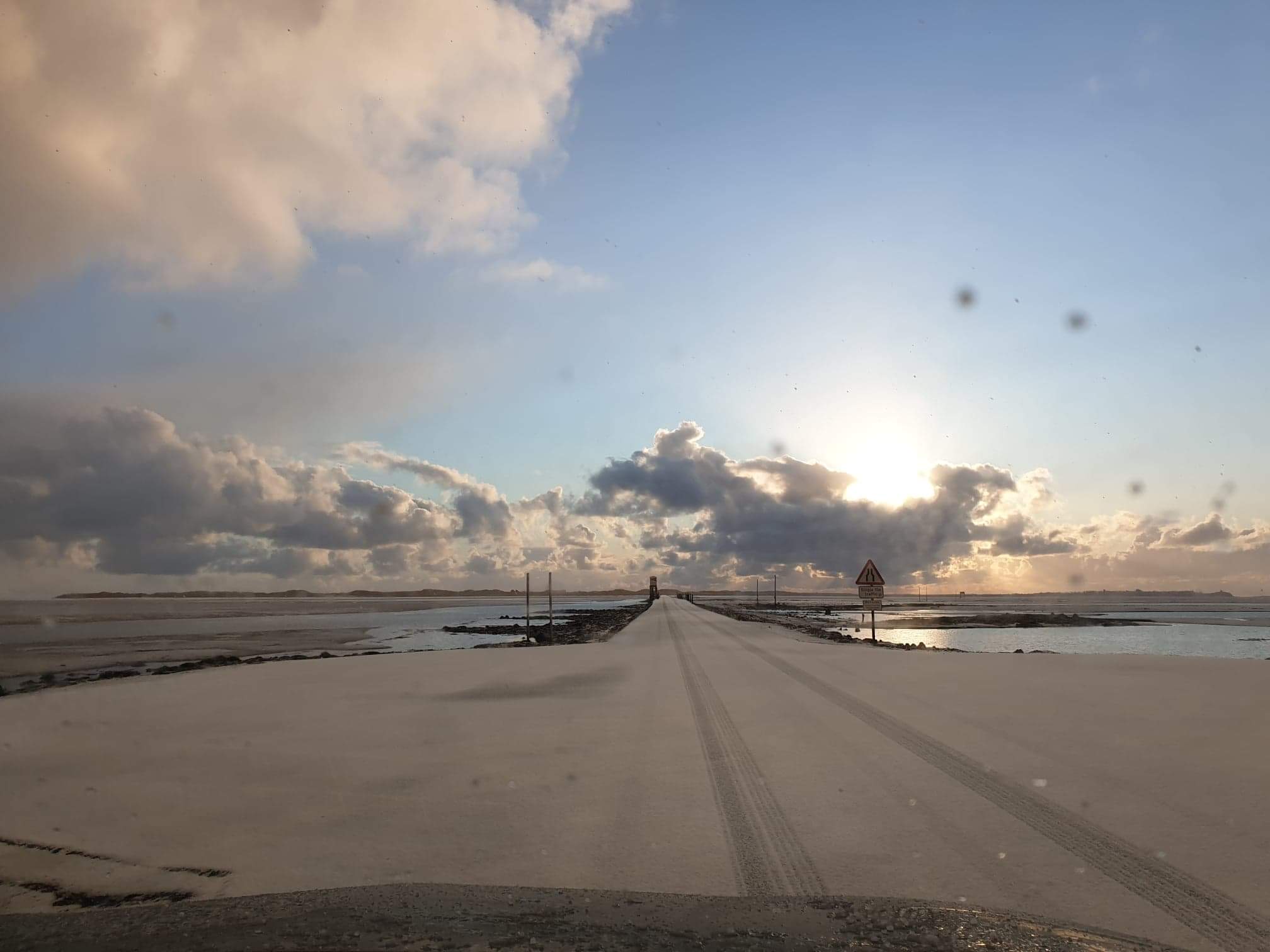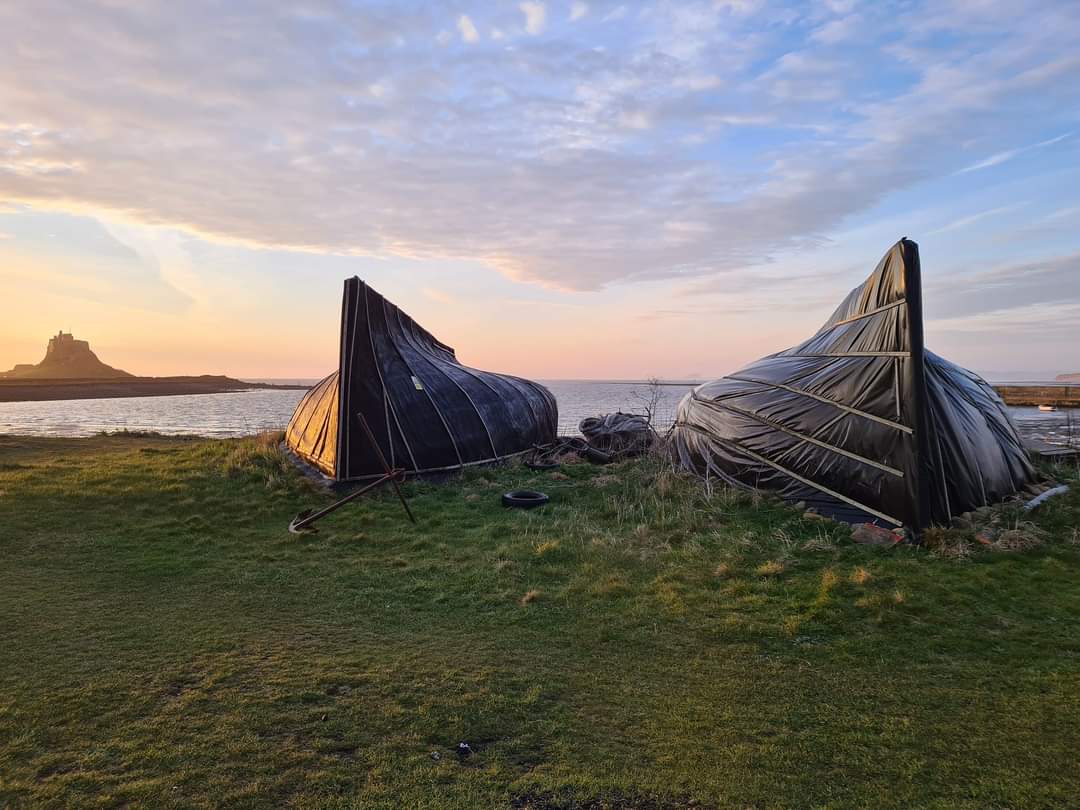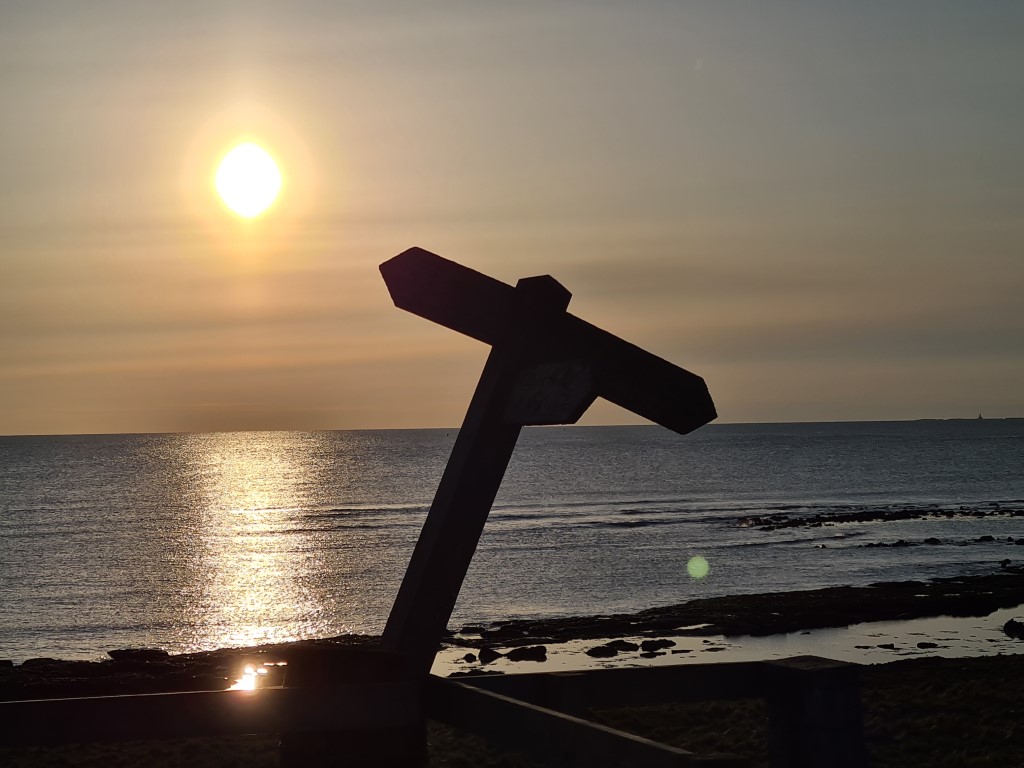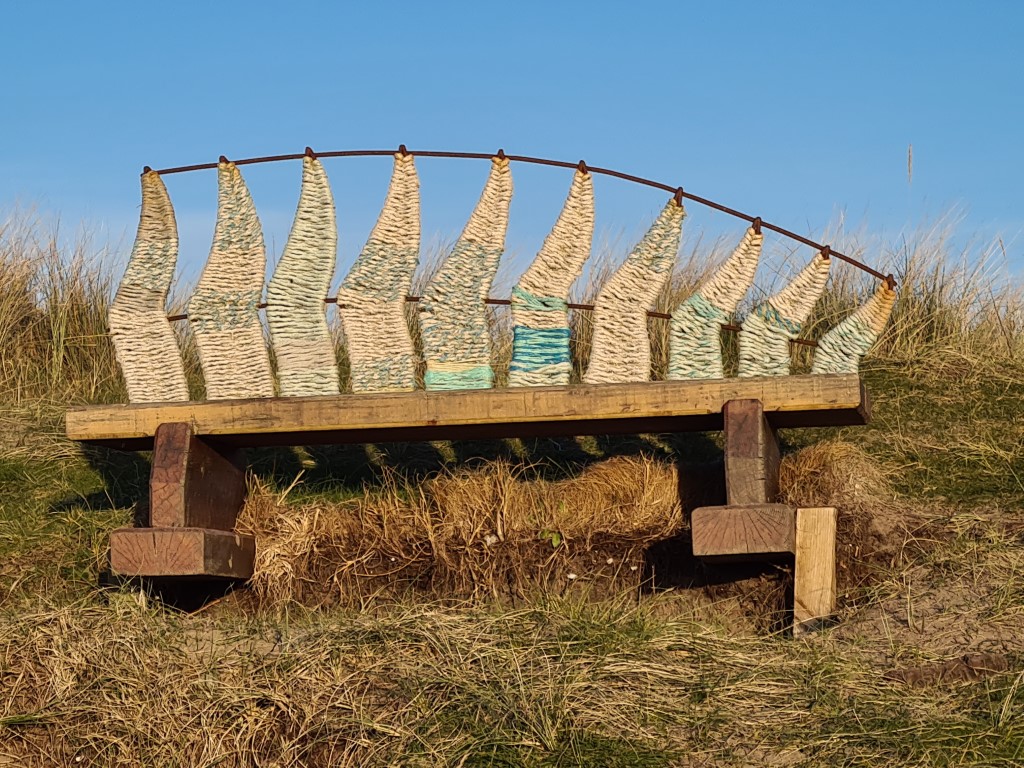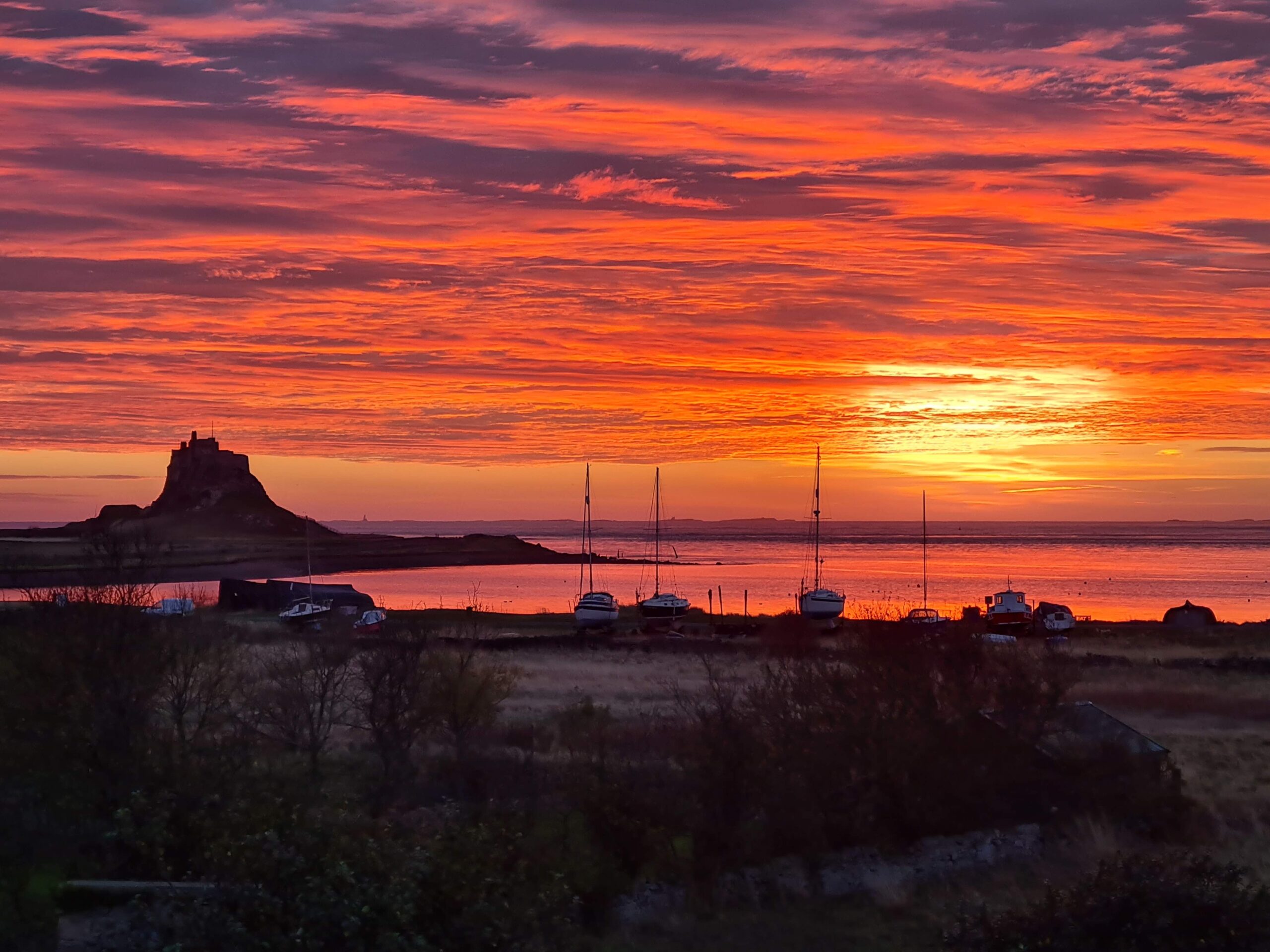The Holy Island of Lindisfarne, also known simply as Holy Island, is a tidal island off the northeast coast of England, which constitutes the civil parish of Holy Island in Northumberland. Holy Island has a recorded history from the 6th century AD; it was an important centre of Celtic Christianity under Saints Aidan of Lindisfarne, Cuthbert, Eadfrith of Lindisfarne and Eadberht of Lindisfarne. After the Viking invasions and the Norman conquest of England, a priory was reestablished. A small castle was built on the island in 1550.
The island of Lindisfarne appears under the Old Welsh name Medcaut in the 9th century Historia Brittonum. Following up on a suggestion by Richard Coates, Andrew Breeze proposes that the name ultimately derives from Latin Medicata [Insula] (English: Healing [Island]), owing perhaps to the island's reputation for medicinal herbs.
Both the Parker Chronicle and Peterborough Chronicle annals of AD 793 record the Old English name, Lindisfarena. The soubriquet Holy Island was in use by the 11th century when it appears in Latin as Insula Sacra. The reference was to Saints Aidan and Cuthbert. The name Lindisfarne has an uncertain origin. The first part, Lindis-, may refer to people from the Kingdom of Lindsey in modern Lincolnshire, referring to either regular visitors or settlers. Alternatively the name may be Celtic in origin, with the element Lindis- meaning "stream or pool". It is not known if this is a reference to the nearby River Low or a small lake on the island. The second element, -farne, probably comes from farran, meaning "land", but may come from faran, meaning "traveller". There is also a supposition that the nearby Farne Islands are fern like in shape and the name may have come from there.
